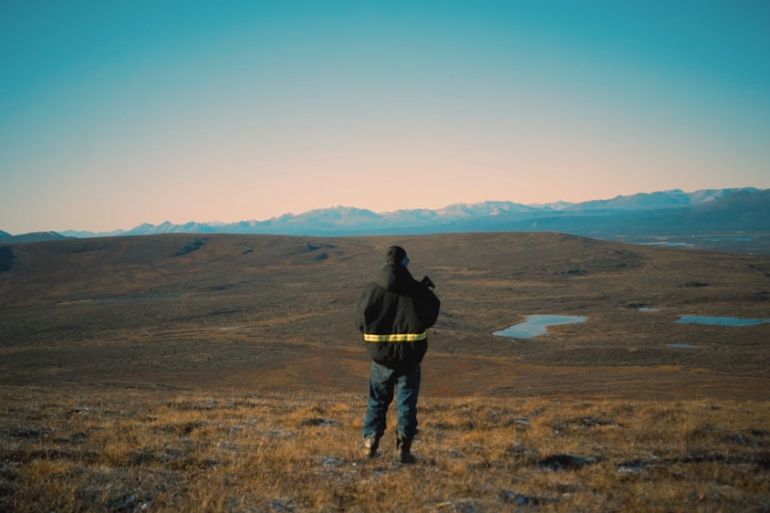Alaska Natives: Our fight to survive
AJ+ tells the story of the divide between those who live off the land and those who want to profit from its oil.

Alaska is usually in the news for one of two reasons: its oil industry or climate change, or sometimes both.
While the effects of climate change – permafrost melting and villages along the coastline eroding away – are real, for Alaska, whose economy has thrived on oil for the past 50 years, simply stopping the drilling for oil is out of the question.
Keep reading
list of 4 itemsAre seed-sowing drones the answer to global deforestation?
Rainfall set to help crews battling wildfire near Canada’s Fort McMurray
How India is racing against time to save the endangered red panda
But for many Alaska Natives, the indigenous people of Alaska who encompass 227 different tribes and speak 20 distinct languages, living off the land is still a way of life.
“Alaska Natives are hit first and hit hardest by global warming and climate change,” says Faith Gemmill, who is an Alaska Native Neetsai Gwich’in, and the executive director of environmental group Resisting Environmental Destruction on Indigenous Lands (REDOIL).
Many Alaska Natives still live in villages off the road system. They still hunt and gather for sustenance. Despite the billions of dollars of oil profits the state has seen, dozens of Alaska Native villages have never been equipped with basic resources, like running water, leaving residents to use outhouses and “honey-buckets,” and to refill giant barrels of water in their homes.
“We are in a resource state, and we live in third-world conditions,” says Gemmill.
But not all Alaska Natives live this way.
Some work for Alaska Native-owned corporations, which can make big profits from the oil industry.
The Arctic Slope Regional Corporation, which made Forbes’ list of “America’s Largest Private Companies”, had revenue of $2.4bn last year. This means that Alaska Natives in that north slope region of Alaska, each of whom are shareholders in ASRC, benefited from those profits.
This has created a divide between those who live off of the land, making little money from the oil industry and seeing the effects of climate change firsthand, and those who profit from its natural resources.
AJ+ travelled to Alaska to explore this divide in its latest installment of its Untold America series.
In Part 1, AJ+ explores the complicated relationship between Native corporations and the oil industry, and asked how Alaska Natives ended up with corporations – not reservations – in the first place.
In Part 2, AJ+ introduces the Alaska Natives fighting to save the Arctic National Wildlife Refuge (ANWR), where a 40-year battle over whether to drill for oil has resurfaced.
Earlier this month, legislation to allow drilling in ANWR was pushed forward in Congress. A Senate committee approved that legislation on November 15, moving it towards a full Senate vote.
The refuge is a critical habitat for polar bears, and it’s the calving grounds of the porcupine caribou herd, which has the longest migration route of any animal on earth. The Alaska Native Gwich’in people depend upon the caribou to survive.
AJ+ travelled to Arctic Village, which sits on the southern edge of the refuge, to learn about the importance of this fight.
In Part 3, AJ+ explores how Alaska Native women are healing from generations of trauma.
One of the women taking the lead is Marjorie Tahbone, or Kunaq as she is known in her native Inupiaq language.
Tahbone, who’s from Nome, Alaska, is a graduate student at the University of Alaska, Fairbanks. She is bringing back the traditional art of facial tattooing for women – a practice once banned by Christian missionaries in Alaska – to help women heal.
And in Part 4, AJ+ asked Alaska Natives: What do people get wrong about your community.